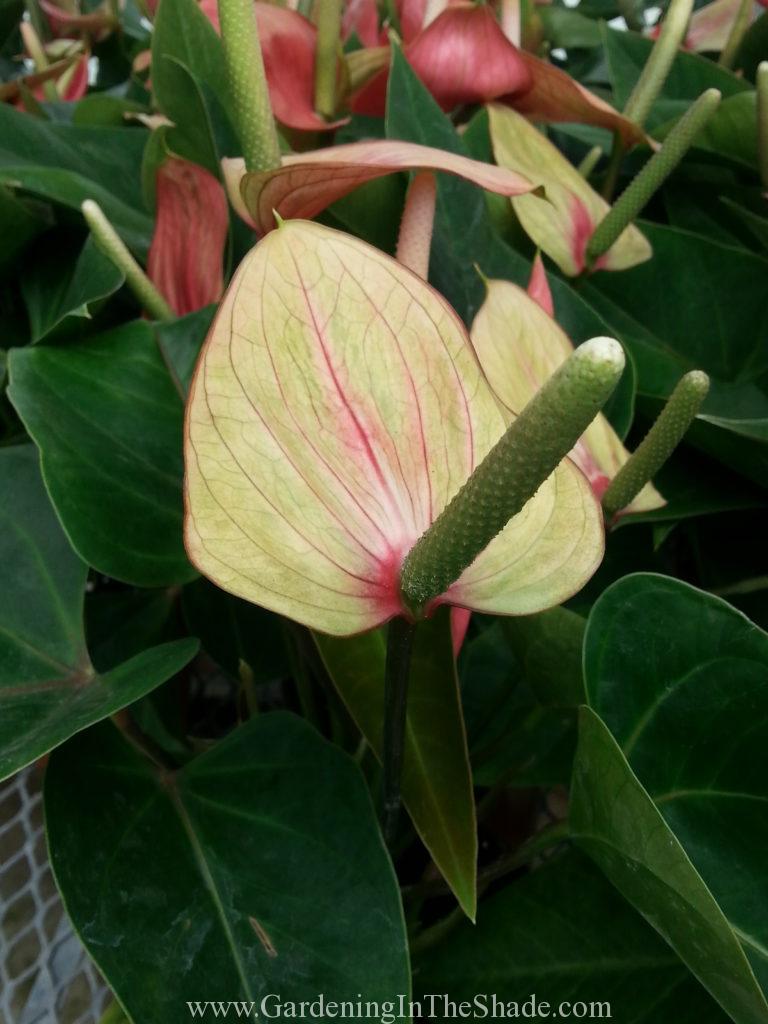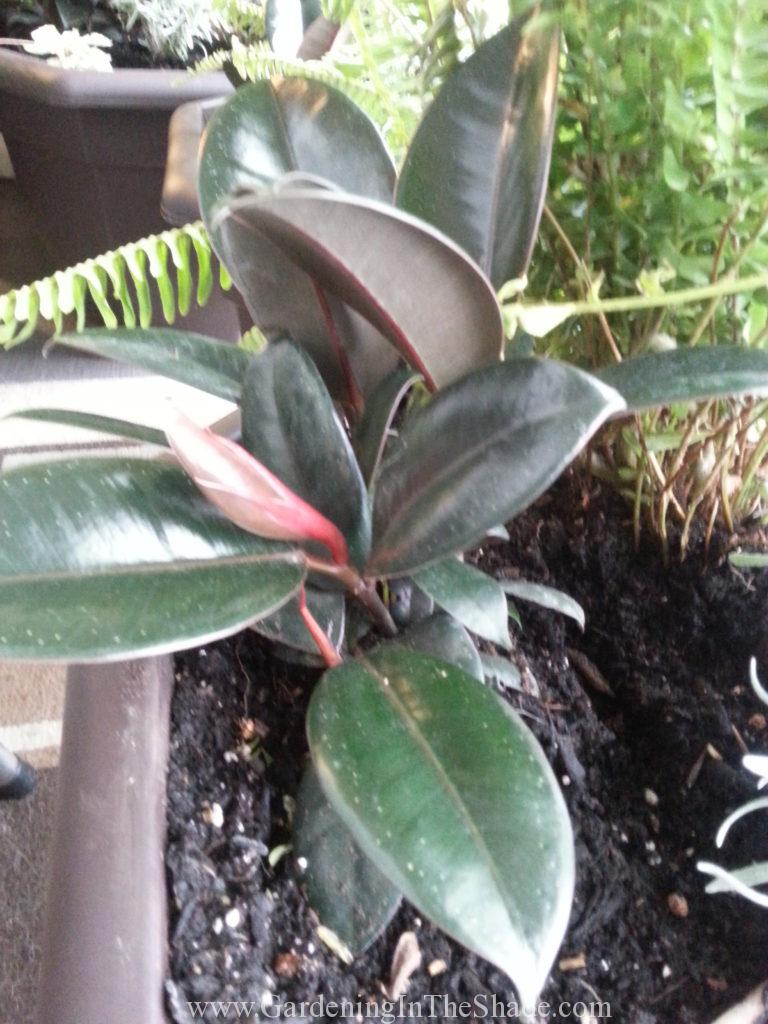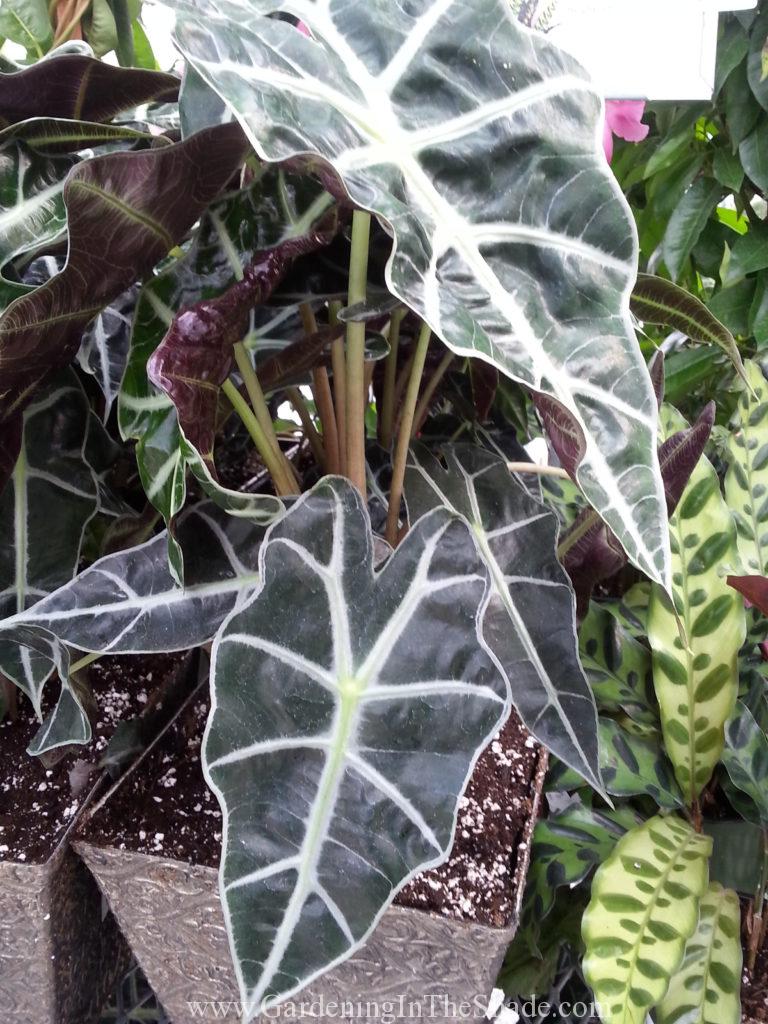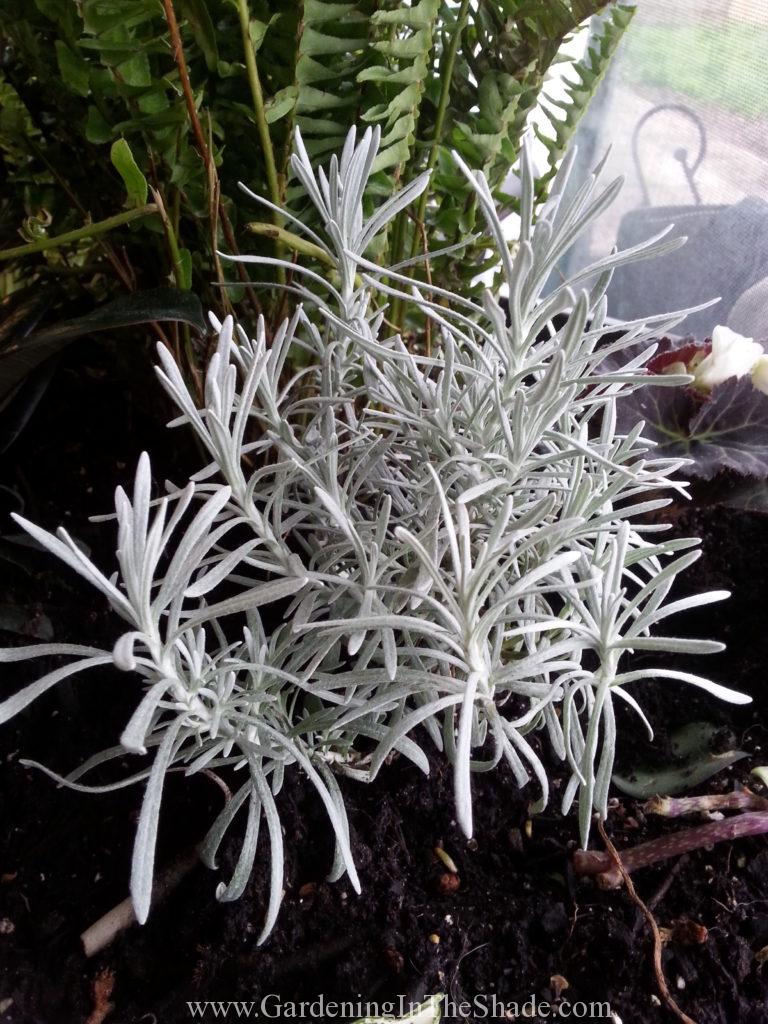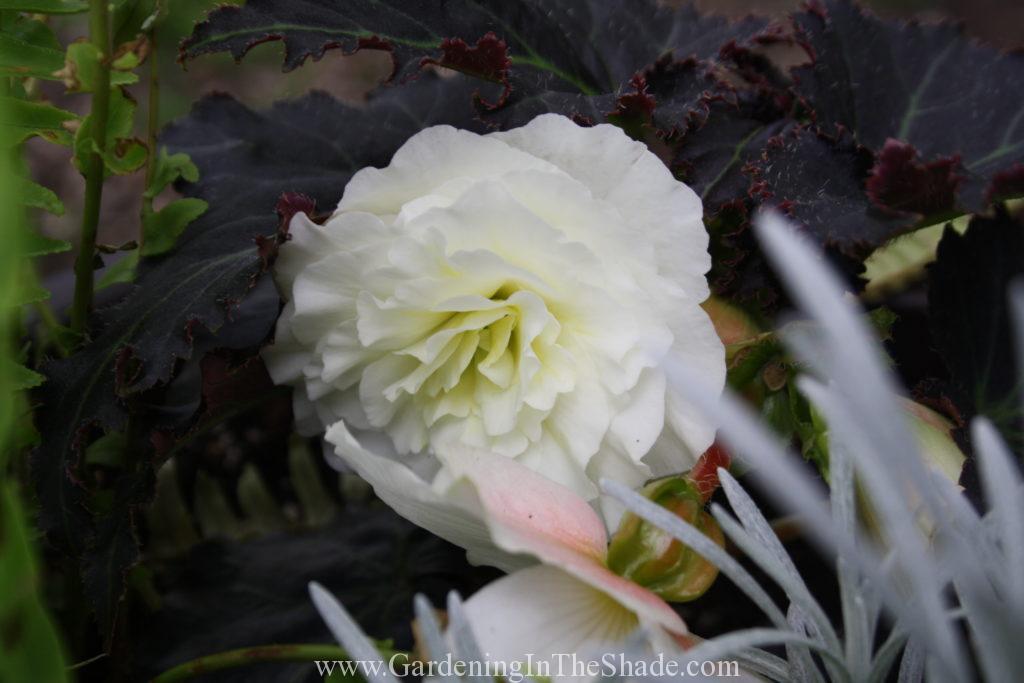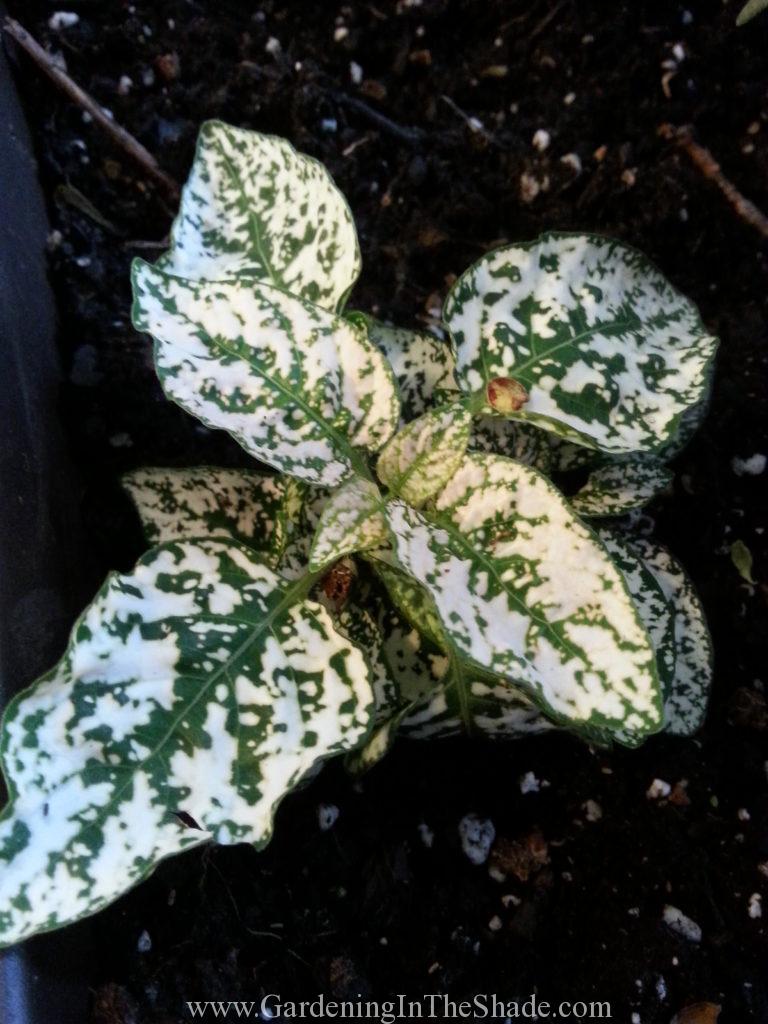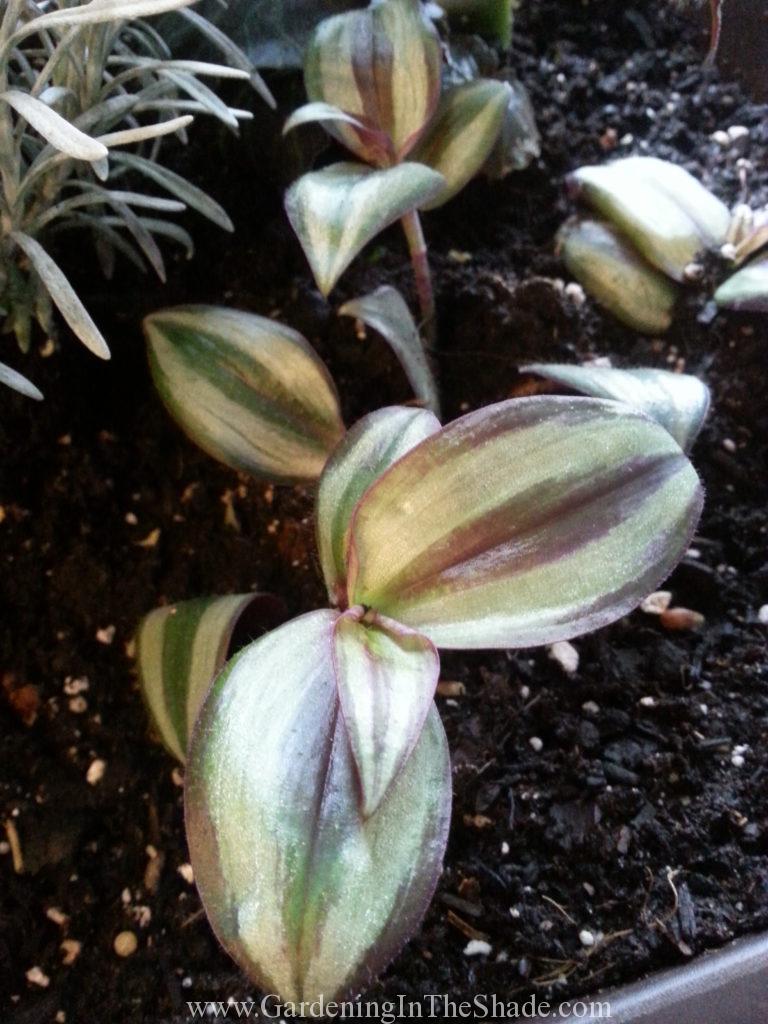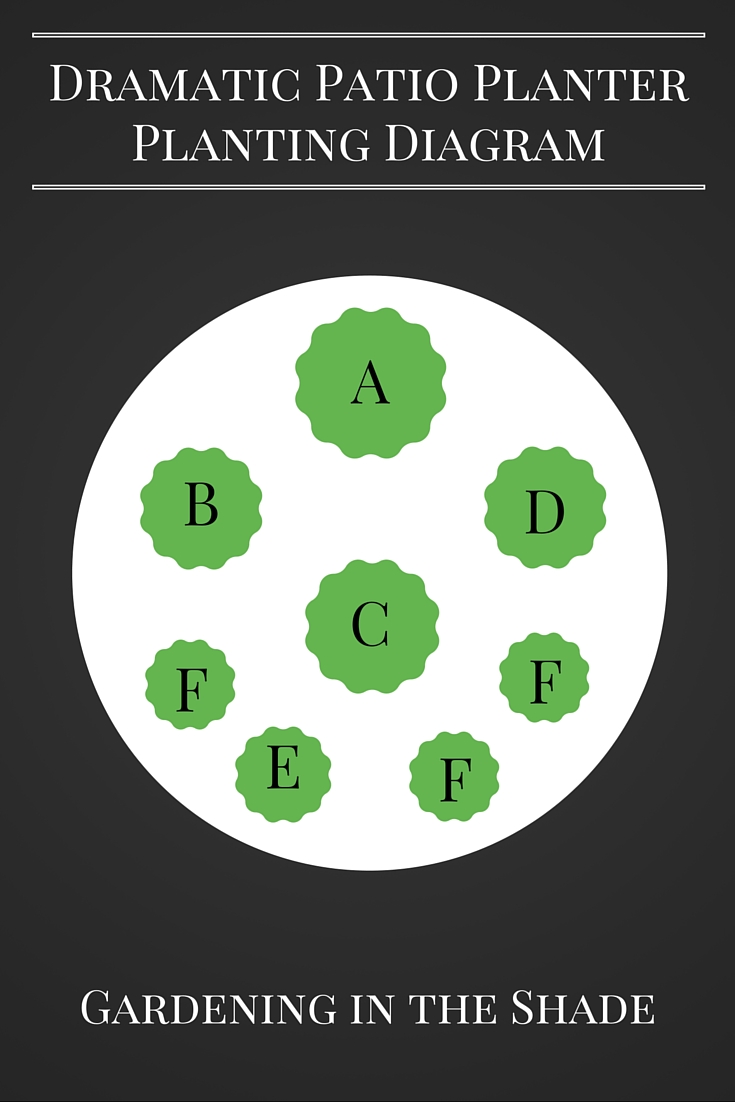It was so hard to pick just one title for this instant patio planter project, because I had so many contenders. Here are just a few of the ideas I discarded
- No Place to Hang a Plant? No Problem!
- Hanging Baskets That Don’t Dry Out!
- I Like Big Pots and I Cannot Lie!
The last one is my favorite.
Anyhow, if you have ever experienced any of the following, this project is for you.
- You are hosting a spring party and none of your planters are pretty yet.
- You bought a hanging basket on impulse and then remembered after you got home you don’t have anyplace to hang one.
- You wanted to buy a hanging basket because it was beautiful, but you didn’t because you have no place to hang one and now you’re sad.
- You buy hanging baskets every year and then before you get to enjoy them, the weather turns scorching and even though you water twice a day, every single plant shrivels and dies while you are at work.
Step 1 – buy a gorgeous Hanging Basket at your garden center.
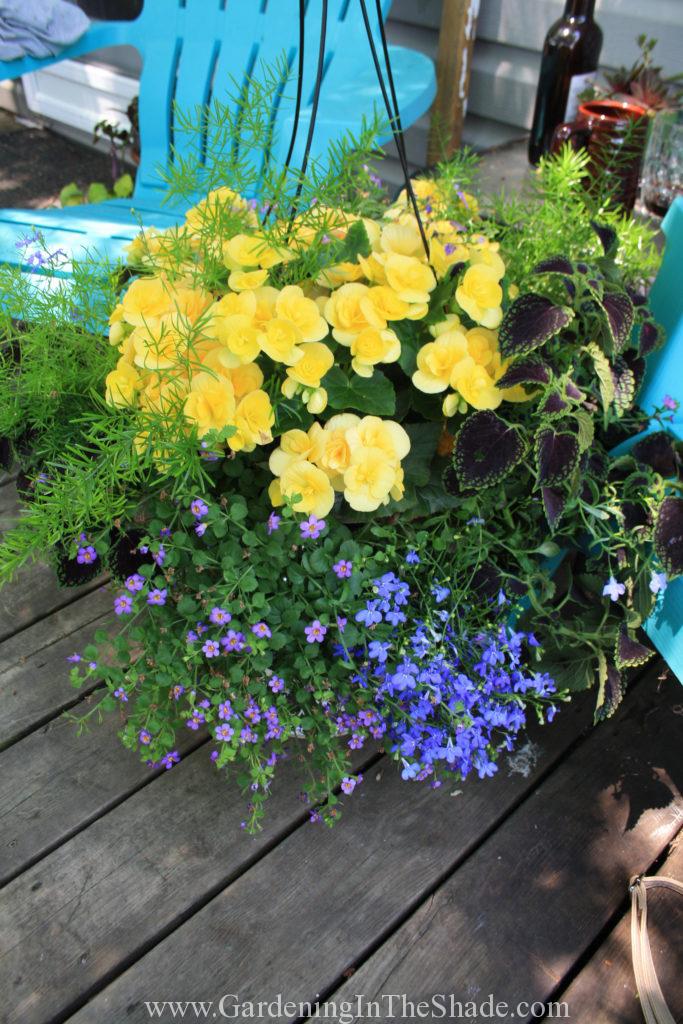
I have this beauty sitting on an upside down pail so none of my spillers get broken. You can see in the photo evidence of my favorite patio pastime.
So you could take the easy route and just drop that hanging basket into an urn or tall planter – pot and all.
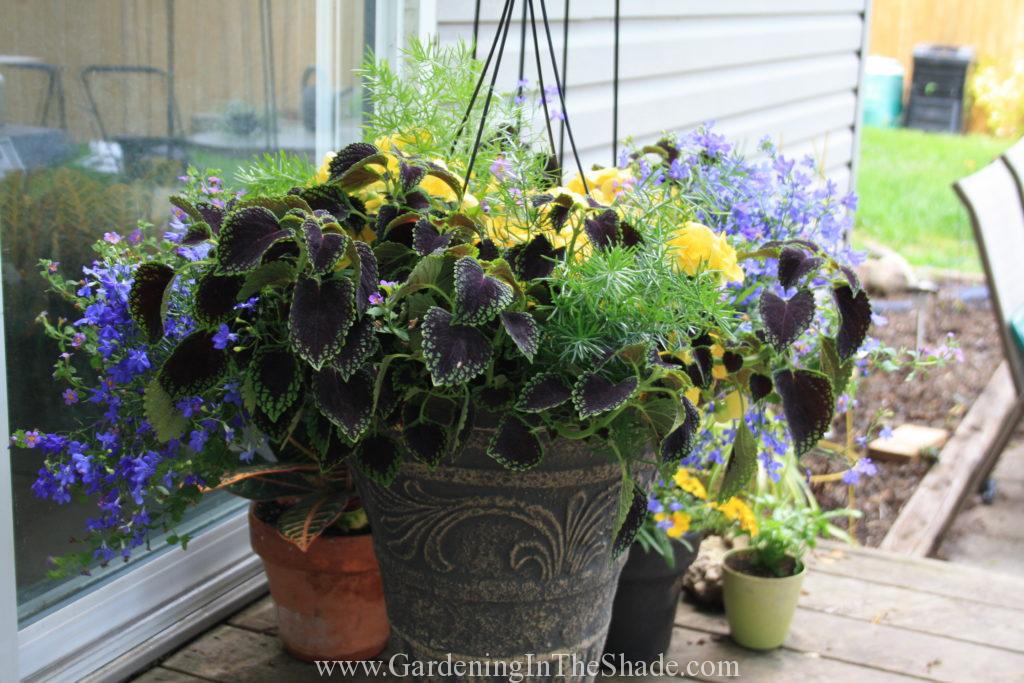
And you can see it will look nice if you do that, but only for a while unless you dedicate yourself watering. See first photo for evidence that I prefer to enjoy my patio in other ways.
If you do take the easy way out buy a premium planter, one that comes in a bigger and deeper pot will last longer. And for Pete’s sake, at least remove the hangers from the pot. It’s easily done and looks so much better than having a purposeless hook in the middle of your planter.
The problem with going the easy way is unless you water twice a day, your planter will still shrivel up and die as soon as you get some hot weather. By the time you bring it home, there isn’t enough soil left in a 12″ hanging basket to sustain the numbers of plants that it holds. The planter above has 8 plants in it! Plus, plants in greenhouses grow best with a light fast draining soil which isn’t always the best for at home. Instead you need to…
Step 2 – prepare a BIG planter with soil.
Use good soil that has lots of organic material in it. Soil that will hold moisture well and is easy to re-wet if it happens to dry out.
Somehow, between finding out the battery on my camera needed charging and the sudden monsoon that happened during this project, I missed taking a photo of this step so here is an awesome video instead. He likes big pots too.
You really want to have that planter prepared perfectly before you go to the next steps – trust me!
Step 3 – remove the hangers from the pot.
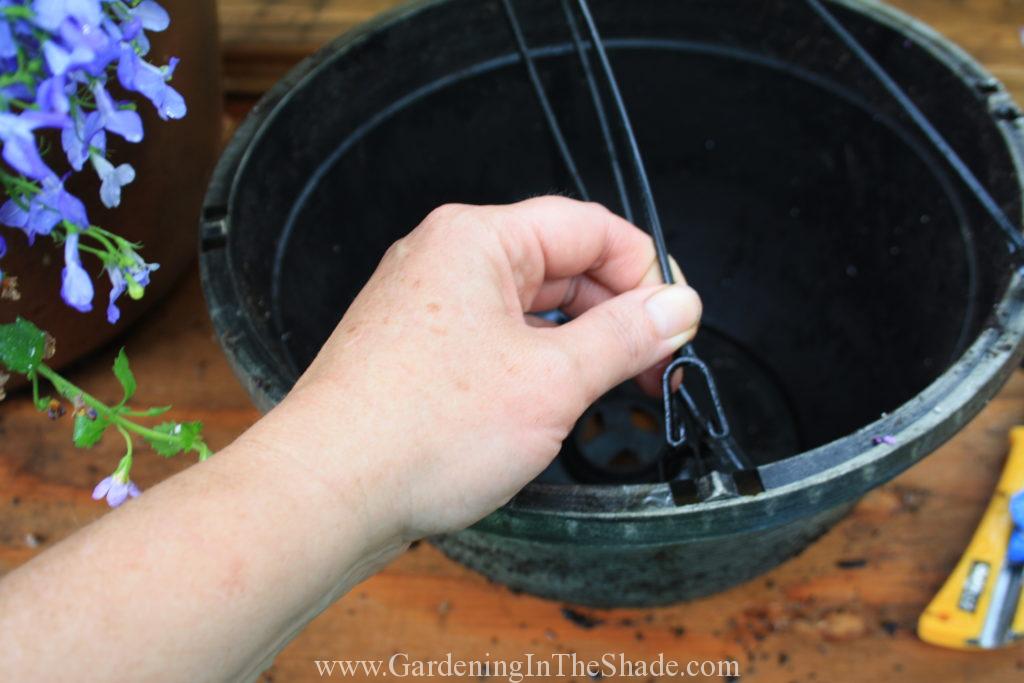
You will have to carefully reach through the foliage to do this, but basically you push the each strand down as far as it will go with one hand to unclip the hook part. With the other hand reach under the rim of the planter and spread the clips apart and while keeping them spread out, pull it up with the other hand. Or if you’re going to throw the pot away, just cut the hanger off.
Step 4 – the tricky part!
If you still don’t have your planter ready with soil and a planting hole, you’re gonna regret it!
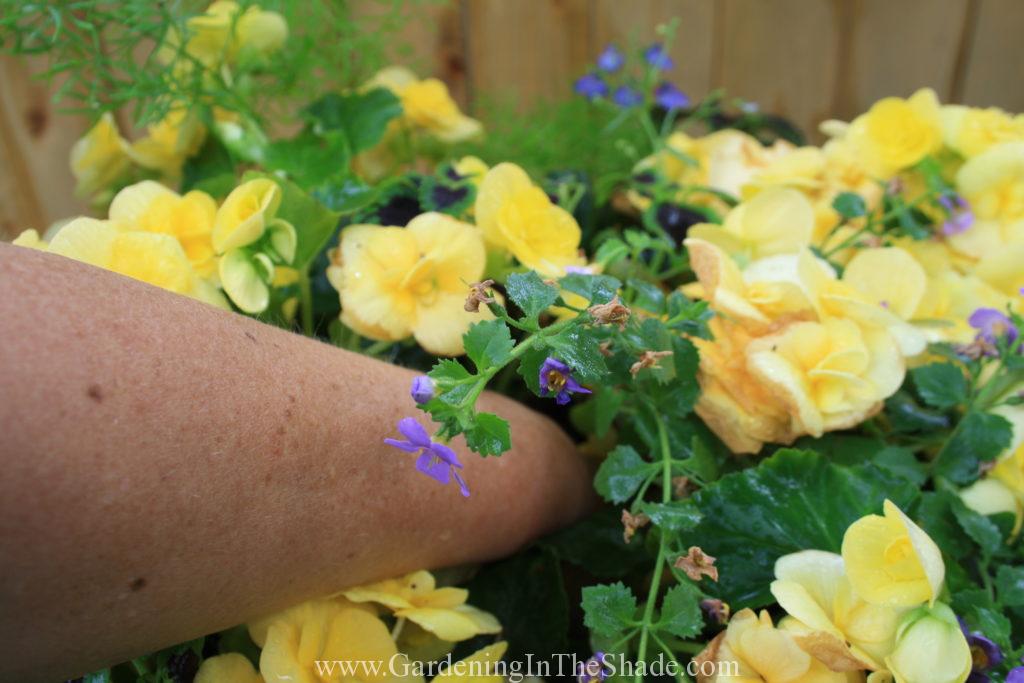
Carefully thread your hand into the center of the planter. You will need to flatten your palm against the soil without crushing any plants. Spread your fingers out as much as you can.
Step 5 – Flip me over and..
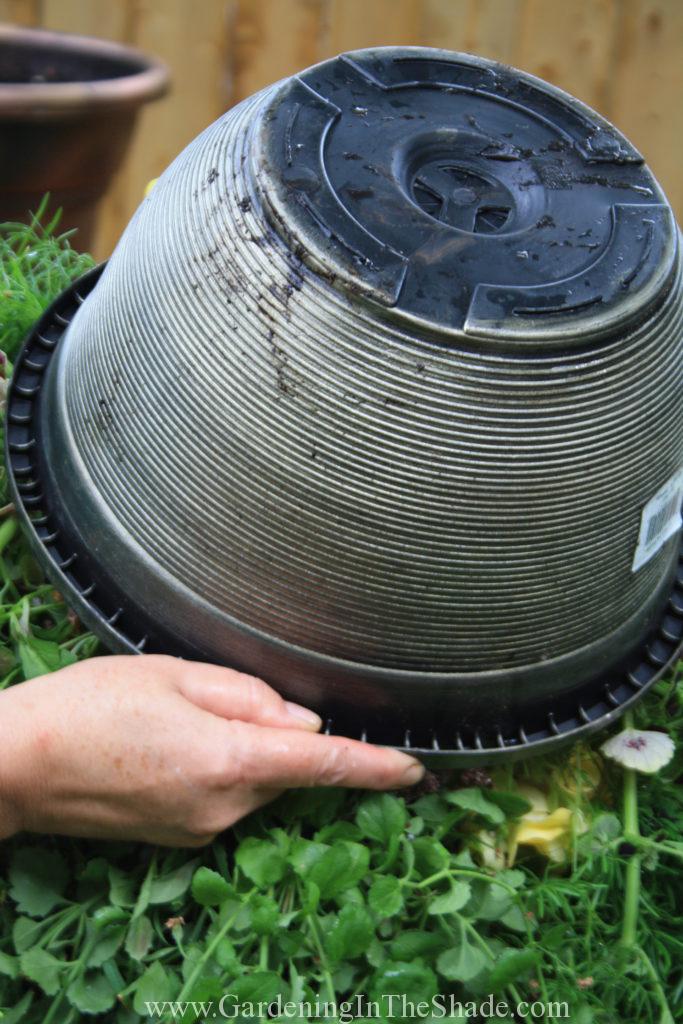
Very rarely will it ever just ‘pour out’. Keep the top of the plant balanced on one hand while you pull the pot off.
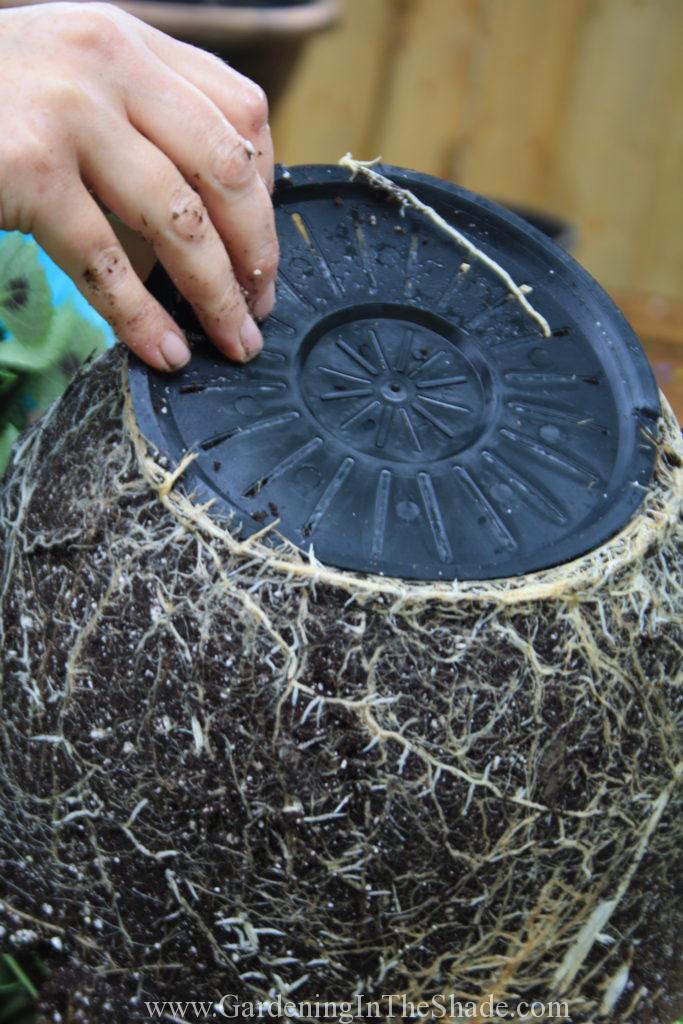
Remove the drainage saucer. The root ball on this one is gorgeous, but it was in a 12″ basket that was nice and deep instead of the typical 2 for $25 10″ basket.
Step 6 – replant it.
Carefully flip the plant into the planting hole you have prepared in your planter. Gently reach under the foliage and tamp soil around the root ball.
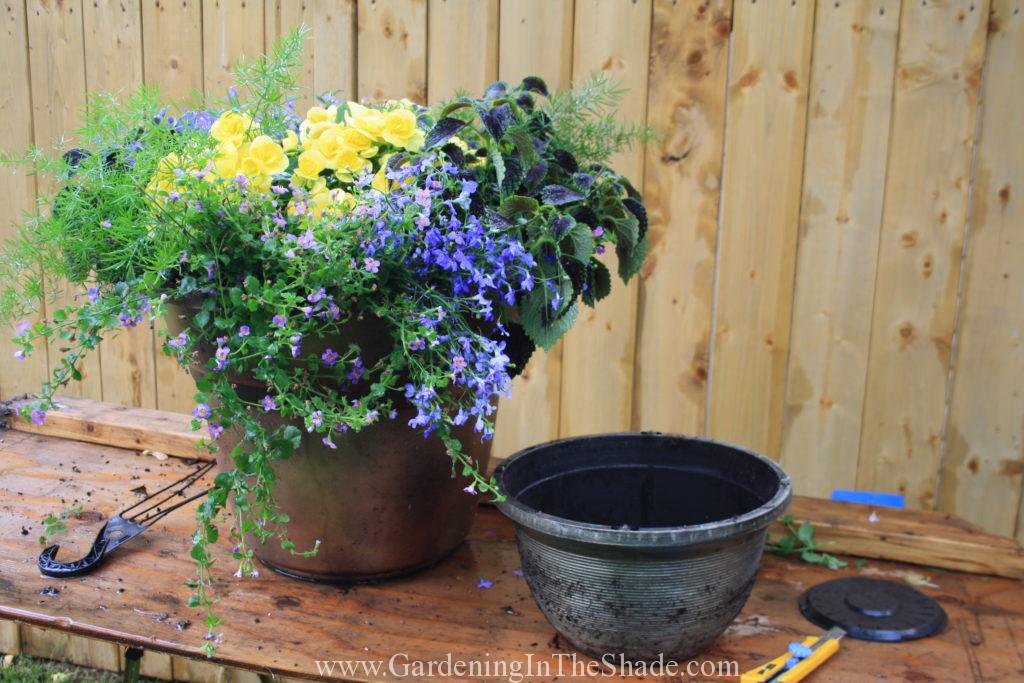
Presto – Instant Gorgeous Patio Planter!
Step 7 – move the planter to it’s new home.
This one is going over by my mailbox where the dogs can’t reach it, because according to my dogs, blue flowers are the tastiest.
The Who, What and How Many!
This planter contains:
- 4 Yellow Begonia
- 2 Coleus of a mounding or trailing type.
- 2 Asparagus ferns
- 2 Lobelia
- 2 Bacopa
It won’t last all summer, or at least not all of it will. As soon as we have a hot spell, the Bacopa will ‘stall’ or stop flowering. They always do when it’s hot. Some varieties are better in heat (the Betty series of bacopa will still have at least some flowers), but Bacopa is not a heat lover. Even worse, without flowers there is nothing attractive about Bacopa. Lobelia, depending on the variety, can also stall. The coleus, begonia and fern are most likely to last through August, but remove any flower spikes from the coleus – they are not attractive.
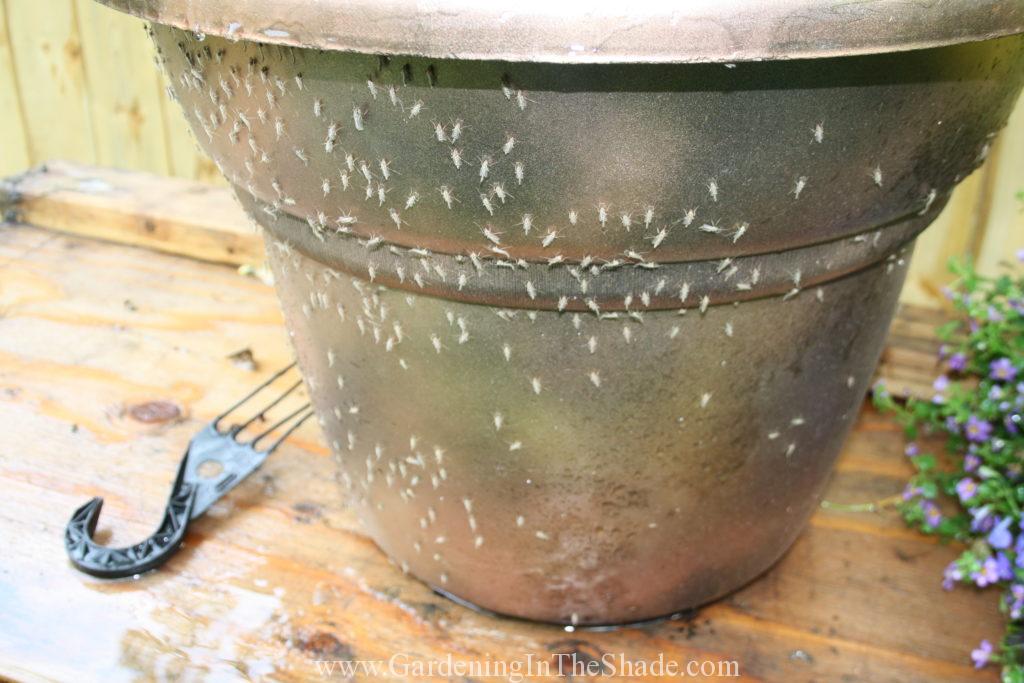
The planter I used is a shabby old plastic planter I spray painted black last summer. After a winter under the deck, it was looking shabby again so I spray painted it in a deliberately blotchy pattern with brass and copper colored spray paint. The metallic paints give the planter a nice gleam in it’s super shady spot. It looks even nicer now that those stupid little flies are gone again.
If you enjoyed this post, don’t forget to share it with your friends! For more just like it follow me on Pinterest, Facebook and Twitter or sign up for regular updates by email.
If you have ever thought about starting a garden or craft blog of your own see how easy it is >>here<<.

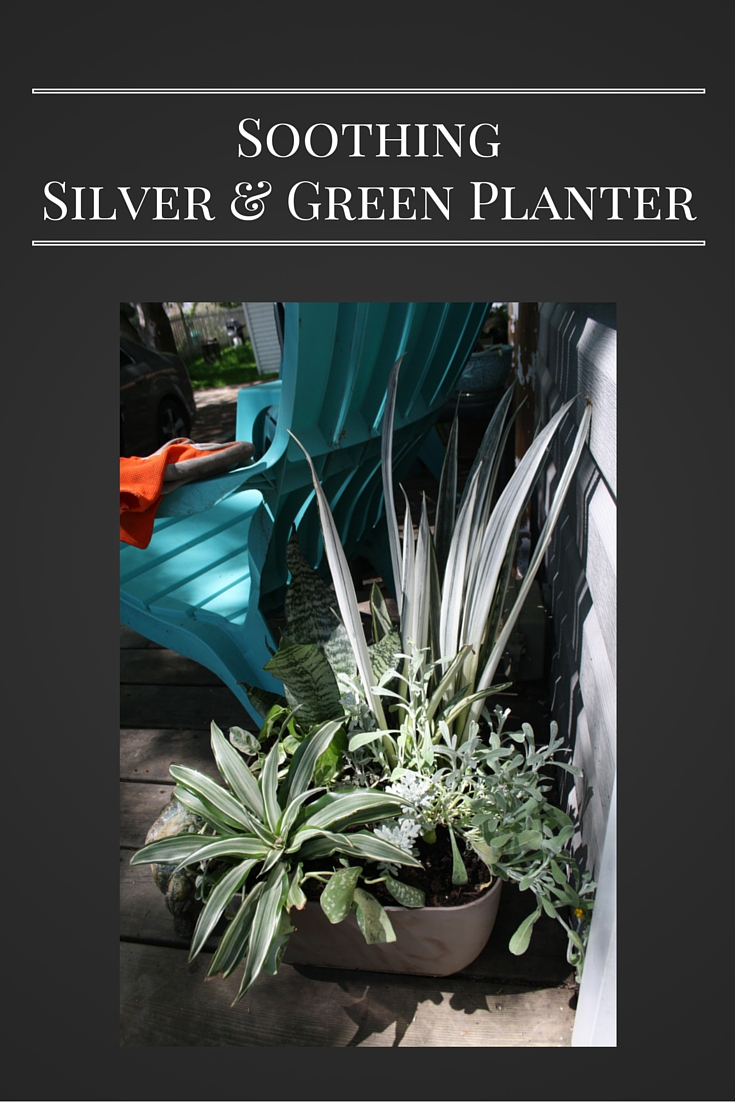
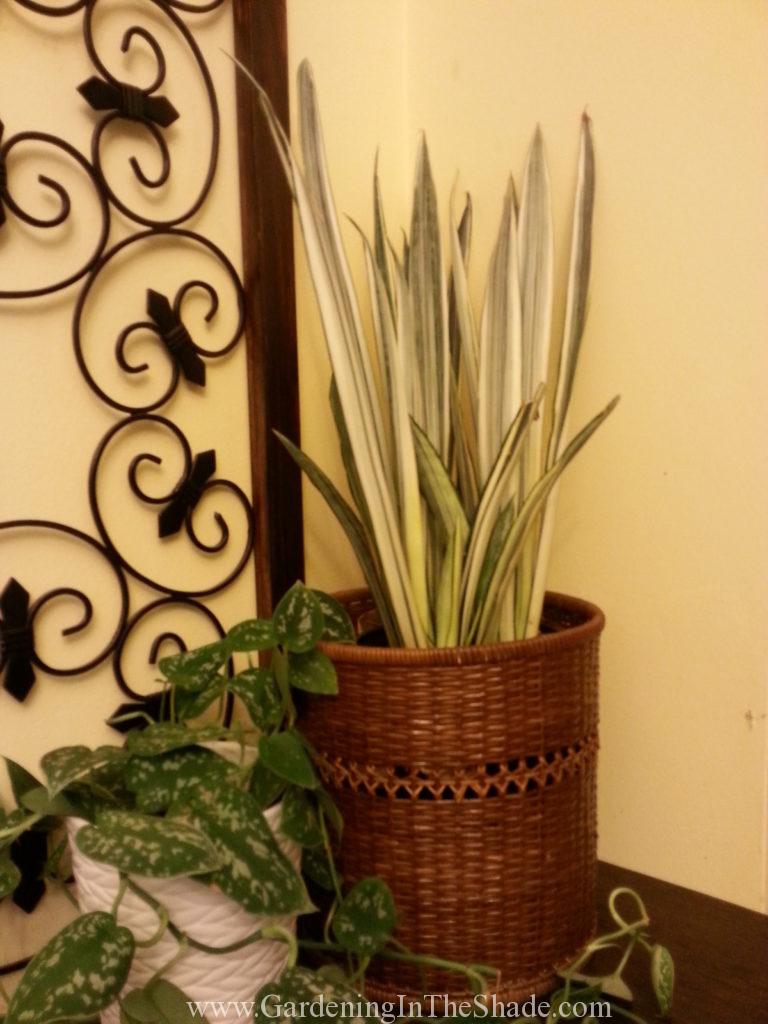
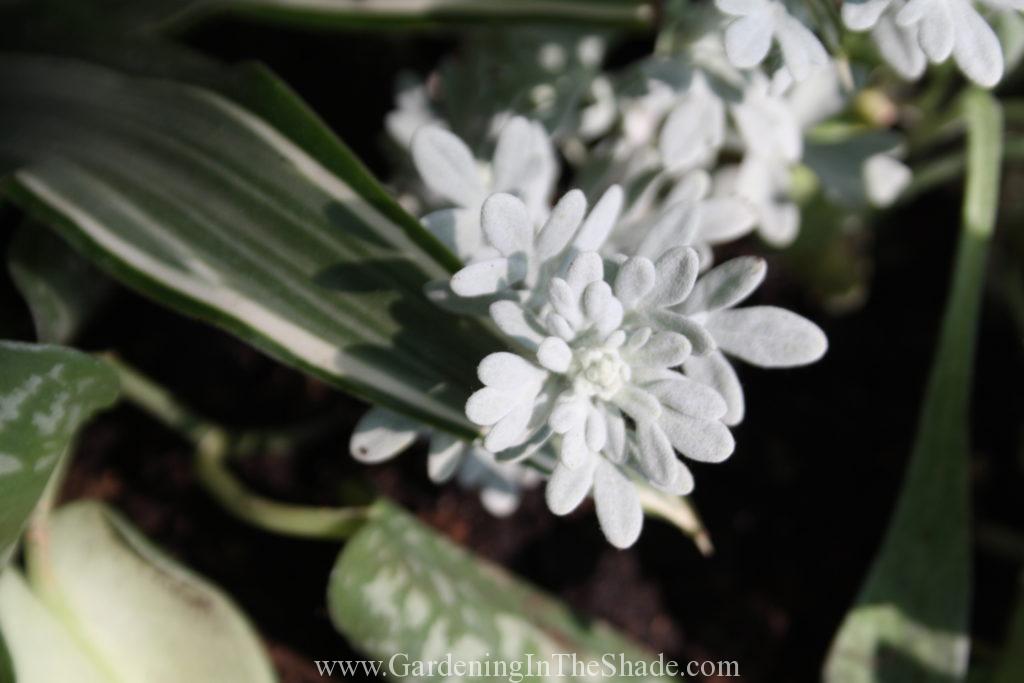
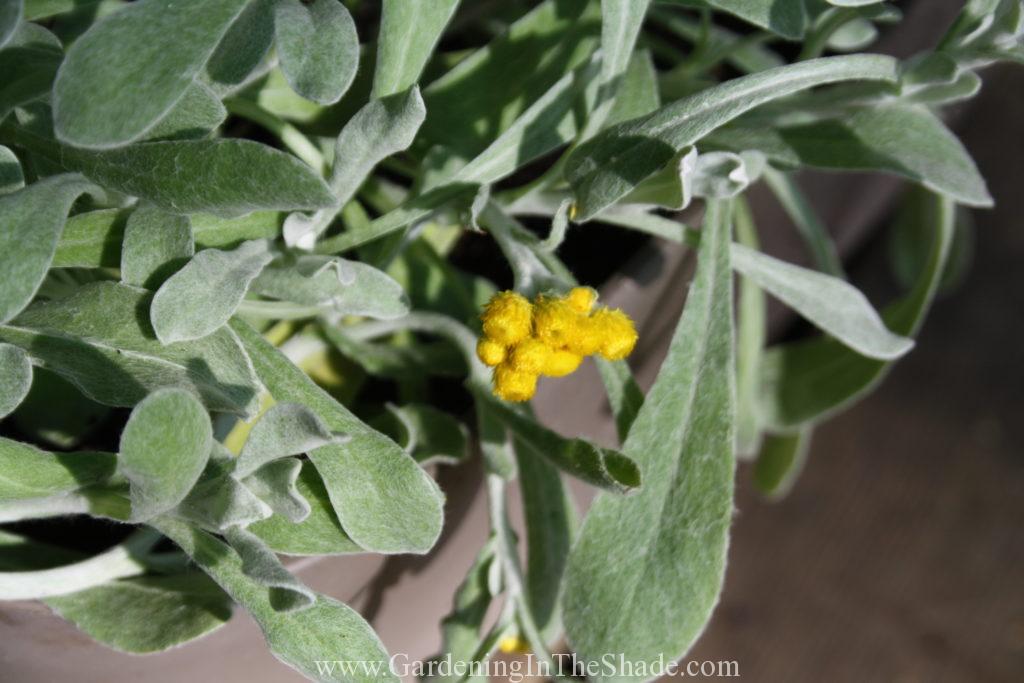
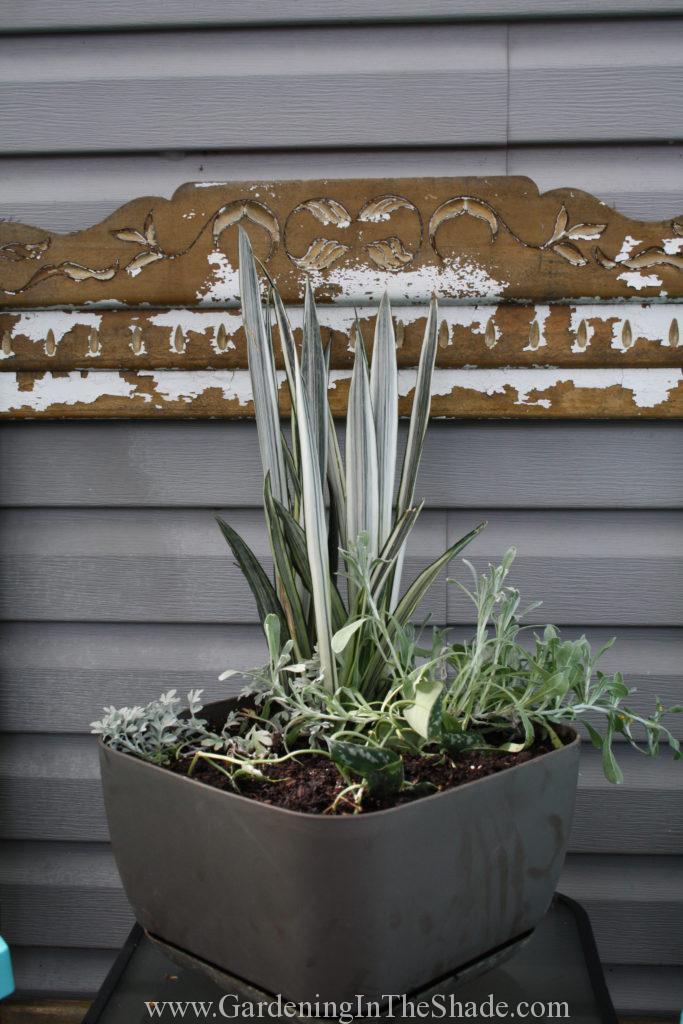
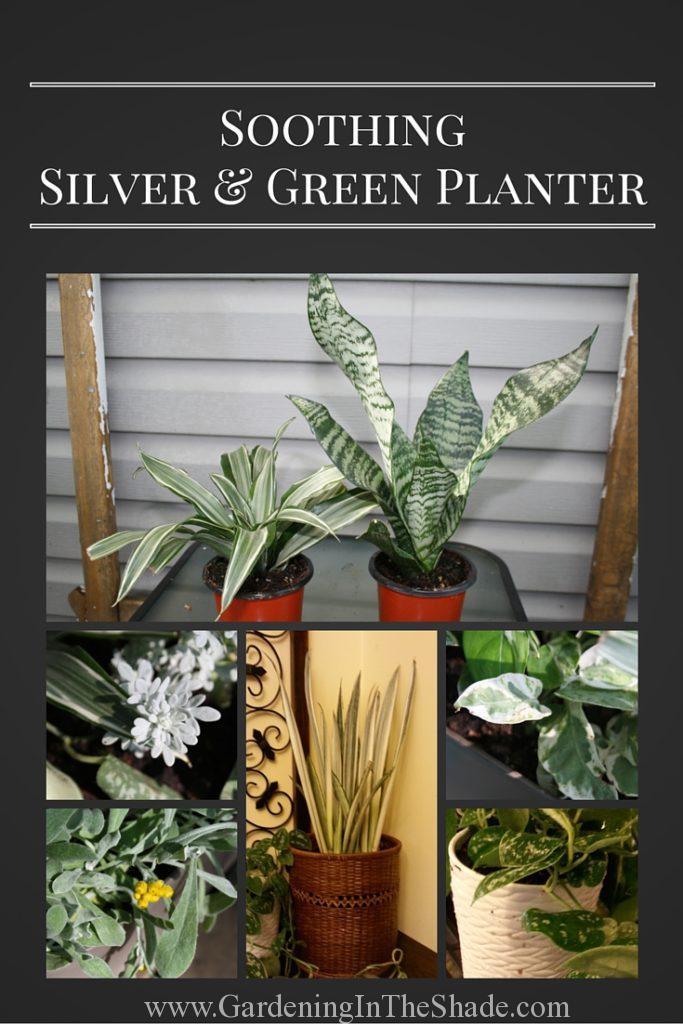
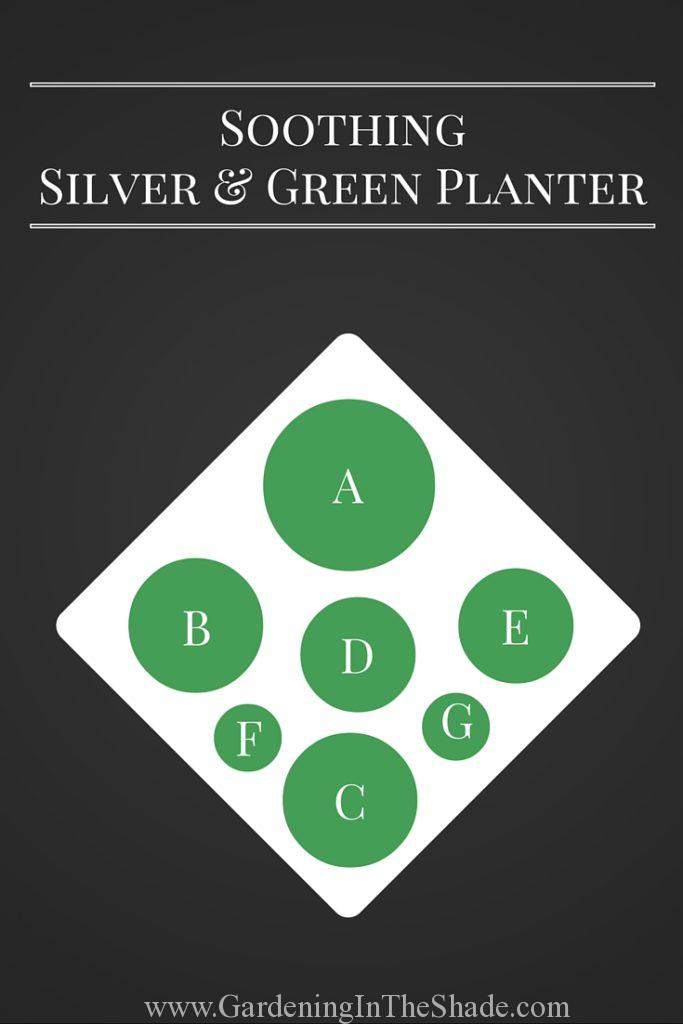
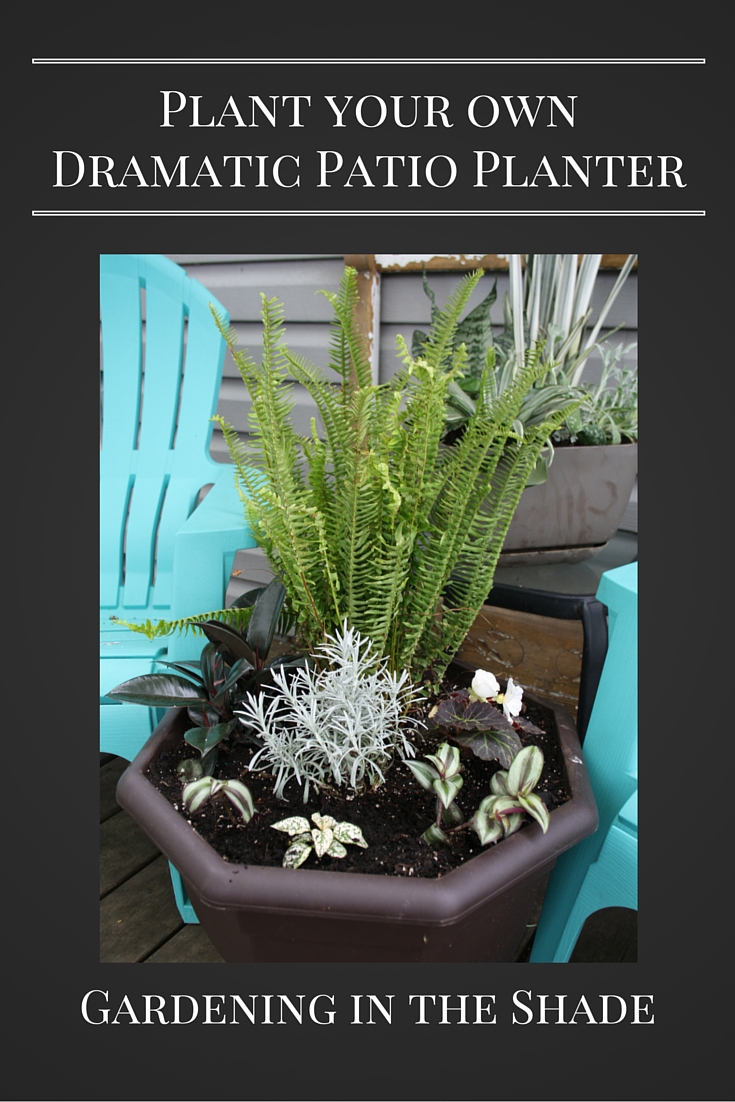
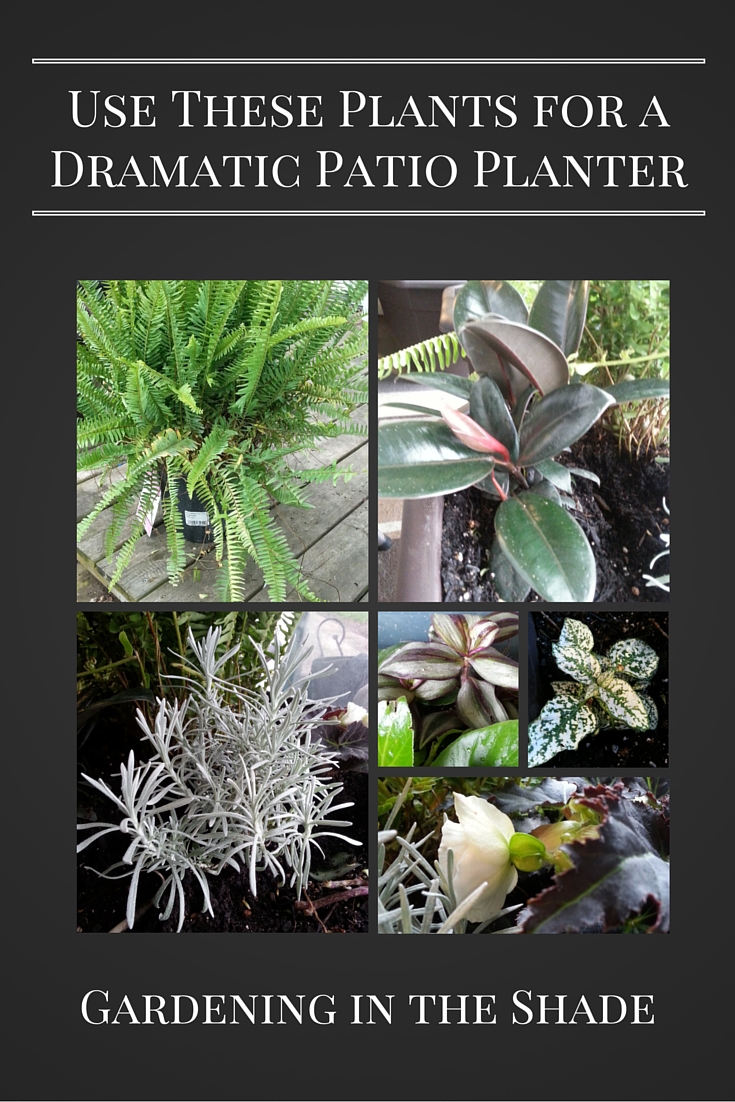
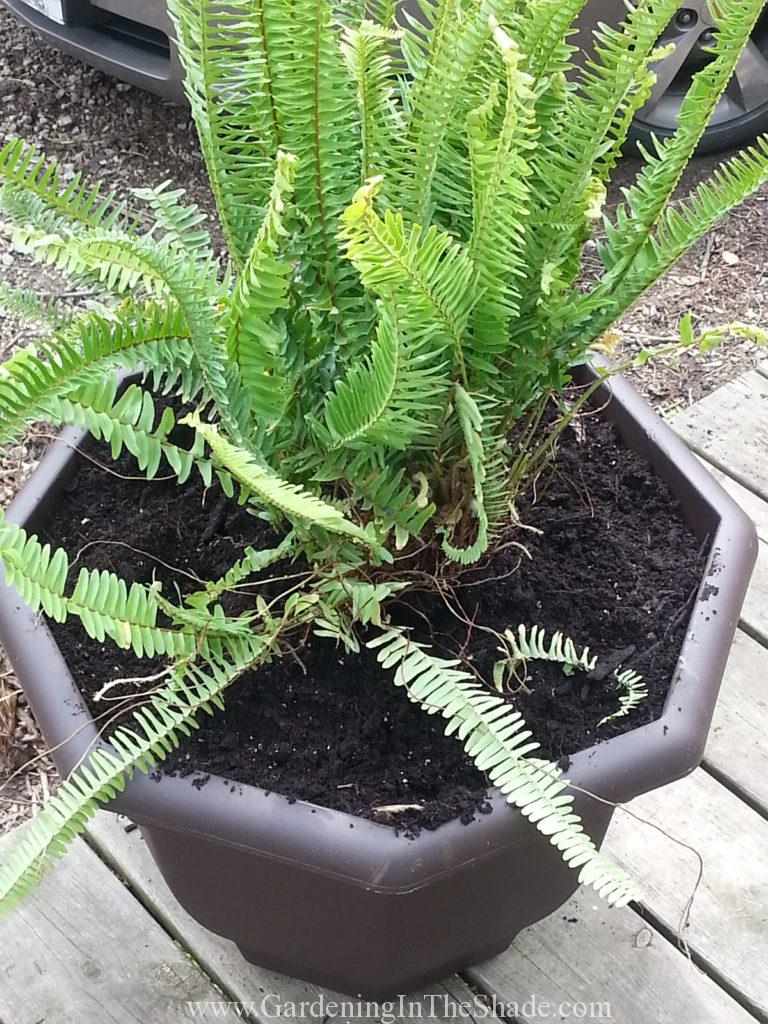
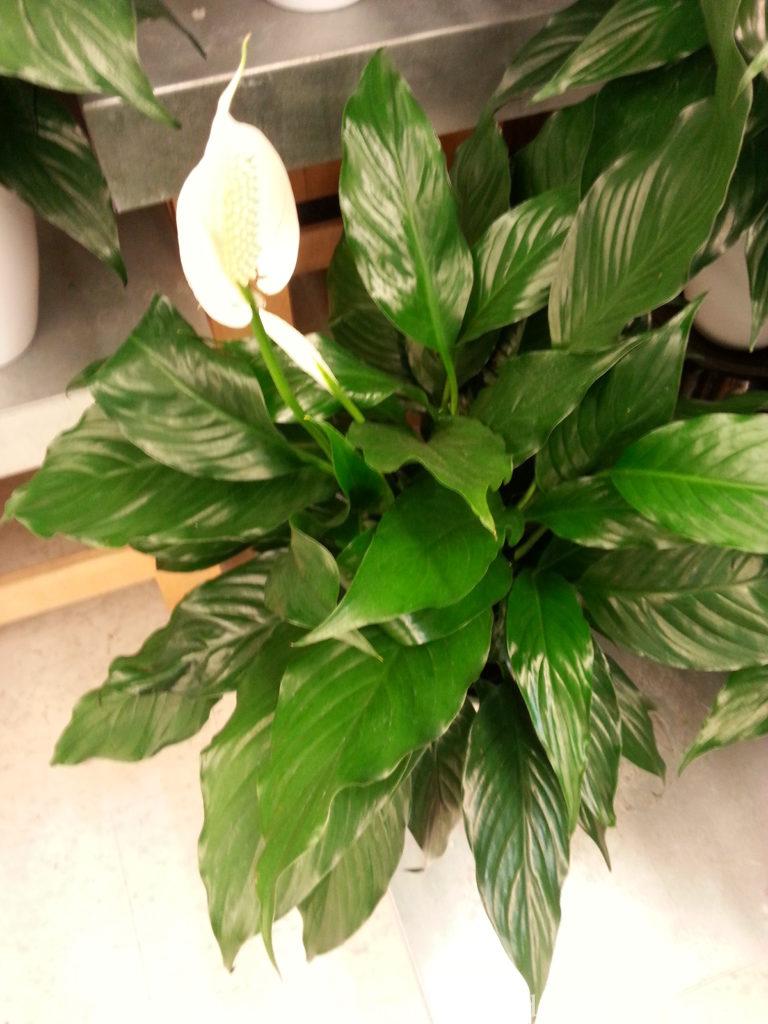 Or you could use a Peace Lily
Or you could use a Peace Lily